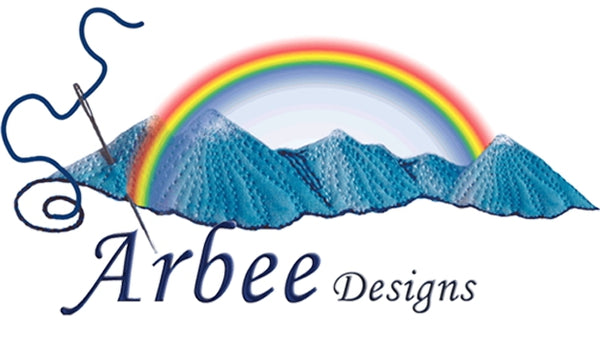I've had a number of quilters ask me about foundation piecing.... in particular my Mariner's Compass pattern. I have this available as the full pattern with complete instructions and the templates only...... and also as an online workshop that includes a beginner's block and an advanced block.
Today I decided to offer some tips I've been sharing with these quilters.
In general:
- Foundation piecing is a method of constructing a block by sewing pieces of fabric to a foundation in numeric order.
- Foundations may be fabric or paper.
- The block to be constructed is printed on the foundation.

paper foundation - All solid lines on the foundation will be stitched along.... in my patterns, I'm not sure if this is standard for everyone.
- And the dotted lines around the edge of the foundation are the cutting line (¼" outside block seam line).
- The printed template is the wrong side of the block.
- All fabric sections are added to the non-printed side of the foundation.

Fabrics go on non-printed side
Here are some tips for foundation piecing:
- Cut slightly larger pieces than required so you have room for movement. Pieces do NOT need to be cut accurately as long as they cover the section with at least 1/4" seam allowances.
- Select a stitch length slightly shorter than a normal setting (approximately 15-18 stitches/inch). This will make it easier to remove paper foundations later and help prevent ends of seams unraveling. Trim all threads about ¼" from work for that extra security.
- Do not reverse at the beginnings and ends of seams, simply apply some tension by holding firmly so your machine does 2 or 3 stitches close together OR reduce stitch length to nearly zero for first and last few stitches.

Reduce stitching at start/end to secure seam - Stitch only on the solid lines. Do not stitch beyond the ends of lines unless in the outer seam allowance as it only makes the folding process more difficult.

stop stitching at end of line - When possible, cut fabric that will end up on the outside edge of the block, on the straight of grain to minimize distortion. In many cases, cutting a square in half instead of using a strip is an ideal way to achieve this.

Avoid having bias edges - these half square triangles ensure
straight of grain is on the outer edge
Basic Steps For Foundation Piecing:
- Step 1: Print as many templates as required either on paper or interfacing.
- Step 2: Cut out around the outer line (dotted line on template sheet) of all templates.
- Step 3: Place the first piece of fabric to cover the section of the foundation that is numbered 1, placing it to the non-printed side with wrong side of fabric facing toward the foundation. Hint: A dab of glue with a glue stick on wrong side of fabric helps hold first piece in place while trimming. Tip: make the first section larger than needed as it can easily move.

Water-soluble glue can be used to hold first piece in place
- Step 4: Place foundation with fabric, foundation side up, on cutting board. Fold along the seam line between sections 1 and 2 of foundation. Tip: use a piece of card (index card or greeting card both work great) to help fold a paper foundation along the line.

A gift card can help aid the folding process - Step 5: With the foundation folded, trim the fabric parallel to the fold leaving a 1/4" seam allowance.

Trim leaving 1/4" seam allowance
- Step 6: Fold the foundation back into place.
- Step 7: Match the second fabric section with the trimmed raw edge making sure right sides of fabric are together. Tip: when using high contrast fabrics, layer them slightly so the darker fabric is shorter than the lighter one - this will prevent shadowing on the right side.

Layering the seam allowance can prevent shadowing - Step 8: Turn over so the foundation is on top and stitch carefully along the seam line of sections 1 and 2, without going over the ends of the line.

Stitching between sections 1 & 2
- Step 9: Fold this second fabric section over the seam and press it into place. With the fabric well pressed, hold up the foundation up to the light. You should see the shadow of the fabric extending at least 1/4" beyond the edges of that section.

Holding the foundation up to a light source can confirm you
have enough seam allowance on the section - Step 10: Repeat from step 3 to add all sections in numeric order. When finished, trim block leaving 1/4" outside seam line.
More Foundation Piecing Thoughts
Not all foundations are square blocks as you can see in my Mariner's Compass.... that's why quilters find it best to sign up for my online Mariner's Compass workshop.
Foundations can be quite intricate as you can see in the block above and this foundation pieced poinsettia block I made.
Or they can be relatively quick and simple like these 4" heart blocks used Anita's new heart quilt.
By the way, in the pattern for these hearts instructions are given for regular piecing and foundation piecing, but the foundations certainly make it easier to make the most accurate block especially if you have difficulty handling small pieces.
What will your next foundation pieced project be?







